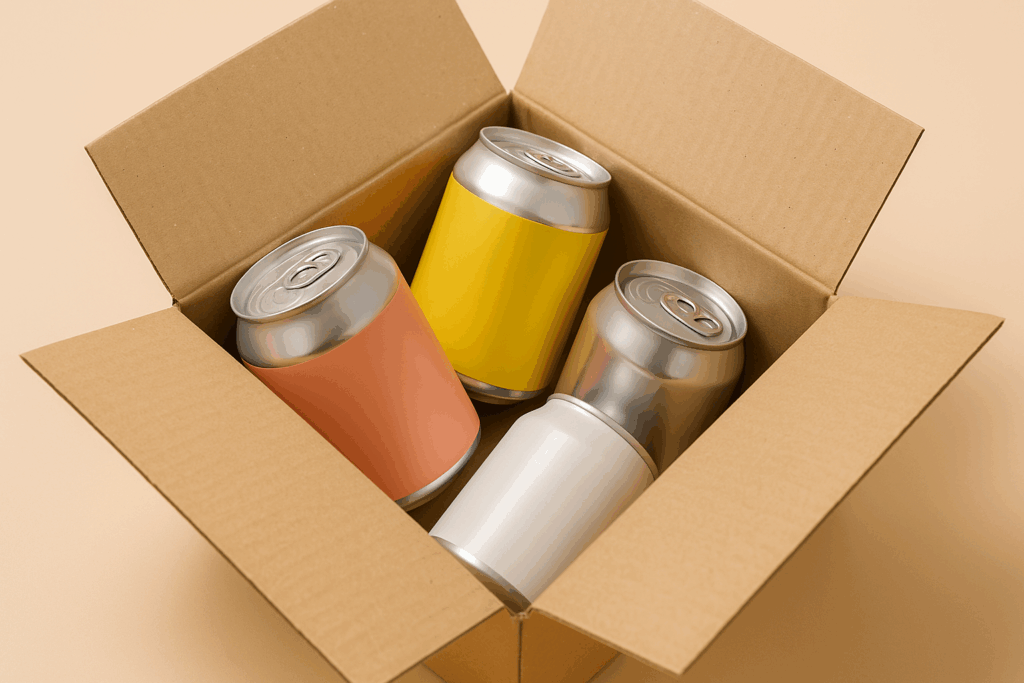The CPG industry in 2025 is tougher than ever and many brands fail because they ignore important factors like product market fit, brand positioning and supply chain strength. This guide focuses on the essentials of creating a unique concept in building a strong brand identity to enable your brand grow in today’s fast-changing market.
Define Your Unique Product Concept
Every CPG brand must start with a product that solves a real problem and connects with consumer values. Trends like healthy and organic products, plant-based consumer goods and sustainability in the CPG industry dominate buying decisions.
To sharpen your concept, it helps to go beyond surface-level ideas and dig into what makes your product truly stand out. Here are some key points worth trying for.
- Find category gaps: Look for spaces where competitors underdeliver.
- Validate product-market fit: Test ideas through consumer feedback and retail data.
- Differentiate with value: Define why your product deserves shelf space.
Example: RXBAR won early by positioning itself around transparency (“No B.S.”), proving how competitive differentiation can drive consumer loyalty.
Building a Strong Brand Identity
Once your product concept has been proven, it is time to focus on creating brand identity. Consumers don’t only buy products instead they buy into stories, ideals and trust.
A strong brand identity should be based on:
- A Brand Narrative that tells a story about how your brand fits into daily life.
- A Consistent branding across all touchpoints from packaging, digital presence and retail messaging.
- A Cultural connection that shapes your brand positioning around what matters like wellness, inclusivity or environmental impact.
Creating an Effective Business Plan
A great idea isn’t enough for investors, partners and retailers. They want proof that your CPG brand can be profitable. Your business plan bridges the gap between your business model and how you will execute it. To successfully draft a business plan, focus on these three key components:
- Financial roadmap: These will outline production costs, expected margins and when the business will break even.
- Go-to-market strategy: Explain how you’ll get products on shelves, grow online sales and attract customers.
- Growth milestones: Set realistic goals for the first 12–24 months from revenue goals to retail partnerships.
Use planning tools to adjust quickly to shifting consumer trends in packaged goods. Show not only how you’ll launch but how you’ll sustain brand growth when competitors move in.
Design and Develop Your Product
Product design is where your strategy takes physical form. Every choice from packaging, sourcing and compliance will affect how consumers view your brand. Shoppers in CPG market care not only about the product but also about how responsibly it’s made and presented.
Here are some key priorities to include:
- Packaging: Strong visuals support brand positioning and help products get noticed and that’s why packaging design should be appealing to stand out on shelves and in digital platforms.
- Sourcing: Work with suppliers who share your values on sustainability and quality, since this builds credibility and trust.
- Compliance: Brand should meet labeling, safety and certification standards to stay competitive and ready for retail.
Emerging trends such as plant-based products and QR codes on packaging add another layer of value. Packaging should be seen as more than just a container but a communication tool that conveys trust, transparency and differentiation.
Set Up Your Supply Chain
Supply chain is the backbone of any CPG startup. It can make the difference between stable growth and costly setbacks. Delays or quality issues can quickly undermine even the best product ideas, which is why resilience and flexibility must matter just as much as cost.
Choosing between local and outsourced manufacturing requires weighing reliability against scale. Domestic options often deliver consistency while global partners can extend your reach. Sustainability also plays a key role as consumers prefer brands whose sourcing aligns with environmental values and transparency.
Agility is crucial, your systems should be ready to handle sudden spikes in demand or new retail opportunities without missing a beat. Building this kind of resilience isn’t cheap, but adopting a “cost of resilience” mindset, as described by BCG, ensures your supply chain can flex without sacrificing margin or market share.
A well-managed supply chain doesn’t just protect your margins but it builds trust, supports your brand identity and ensures consistency as your brand grows.
Launch and Market Your Product
Launching a brand should build momentum. Today’s buyers often discover new brands through a mix of digital channels and in-store experiences. Strong digital marketing using social media, influencer collaboration and paid ads helps tell your story and reach a wider audience.
At the same time, a solid retail strategy with in-store demos, eye-catching signage and QR-code storytelling creates a direct connection with shoppers. Measuring performance is equally important, so tracking metrics like customer acquisition cost (CAC), return on ad spend (ROAS), and sales velocity allows you to refine campaigns and maximize results.
Secure Funding and Manage Finances
Investors expect more than just passion. They want evidence that your brand has product-market fit and the ability to grow. Here are three key areas to focus on to earn investors trust.
- Funding options: Consider starting small through bootstrapping, tapping into crowdfunding or working with venture investors who specialize in CPG brands.
- Financial discipline: Keep a close eye on your cash flow, control production costs and avoid stretching your resources too thin too early.
- Smart use of tech: Leverage fintech tools to simplify accounting, improve forecasting and streamline payments.
By managing your finances carefully, you’ll be able to meet current demand while still investing in long-term growth.
Scale and Grow Your CPG Business
Scaling a CPG brand goes beyond simply adding new products. It requires building systems that support sustainable growth and making strategic moves. Start by expanding distribution locally, then move into national or even international markets.
Introduce products that align with consumer trends such as health-focused or plant-based options to stay relevant. At the same time, use retail and e-commerce analytics to track demand and anticipate changes in the market.
Growth is most effective when it’s intentional, supported by a solid business model and reinforced with a strong brand story that sets you apart from competitors.
Launching with Purpose, Growing with Intention
It takes more than just knowing the fundamentals to develop a consumer packaged goods brand in 2025. It’s about designing robust systems, scaling with purpose and establishing connections with values-driven customers.
Now is the moment to take action if you’re prepared to go from concept to shelf. Make sure your product is in line with current consumer trends, establish a distinctive brand identification and create a long-lasting business plan.
Are you prepared to start a CPG brand? Get in touch with MAVRK Studio to find out how we can assist you.





